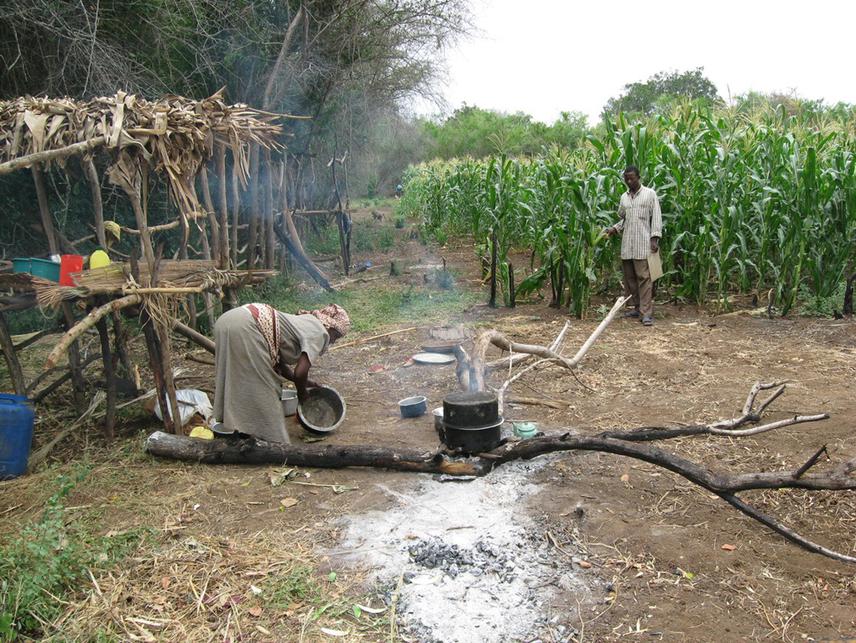Stanislaus Mulu Kivai
The study aims at mapping the human-nonhuman primate conflict hotspots, determine if the endemic and endangered Tana River primates are involved in the conflict and to explore the deterrent methods used to prevent crop raiding and livestock predation by primates and test their efficacy and suitability around Tana River Primate Reserve while sensitizing and building capacity of the local community.

A baboons sneaks into the farm and gets away with some maize during guarding exercise at Msas’ farm.
Habitat degradation has been a major threat driving primates towards extinction. As a result most of the sensitive primates have disappeared while the adapted ones which have remained have fallen victims of human – wildlife conflicts mainly because of crop raiding. Key primate conservation areas in Kenya have not been spared either regarding this menace. The Tana River Primate Reserve which is critical habitat for the Tana Crested magabeys and Tana Red Colobus besides other common primates experience similar threat. Human encroachment to harvest palm wine, thatching materials, poles, basketry raw materials and deforestation for cultivation are rampant here.
Consequently, as the primates continue being pressurized in their habitat under declining food resources, they are likely to result to crop raiding as adaptation strategy. Subsequently, the poor local communities who are agriculturalist incur economic and food losses and in return most likely kill the primates to protect their crops or livestock. This implies the need for concerted conservation efforts and wise decision making to save the endangered primates while being conscious of the local livelihoods. Therefore, in order to enhance the survival chances of the endemic and critically endangered primates in Tana River Primate Ecosystem (Tana River Red Colobus, Procolobus rufomitratus and Tana River Crested Magabeys, Cercocebus galeritus) while fighting food insecurity and improving local livelihoods, this project focuses on minimizing human-nonhuman primate conflicts and associated food and economic losses by the poor farmers.
The project specifically aims at mapping the distribution of the human-nonhuman primate conflict, determine the primate species involved in the conflict, evaluation of the associated socio-economic losses and the identification and recommendation of the suitable and effective deterrent methods in attempts to resolve or minimize the conflict. Geographical Information System (GIS), direct field observation, participant observation, interviews and questionnaire techniques will be adopted to meet the project objectives. It is predicted that; the community around the Tana Primate Reserve experience Human-nonhuman primate conflict at varying magnitudes, the endangered and endemic Tana River primates are involved in the conflict and lastly some of the deterrent methods in place can provide basis of developing more effective and non-invasive deterrent methods which the farmers could adopt.
Testing these predictions will contribute significantly in resolving the human-nonhuman primate conflict in Tana River Primate ecosystem as well as providing basic fundamentals to Kenya primatologist task force in designing a conservation and management strategy for the critical Tana River Primates.